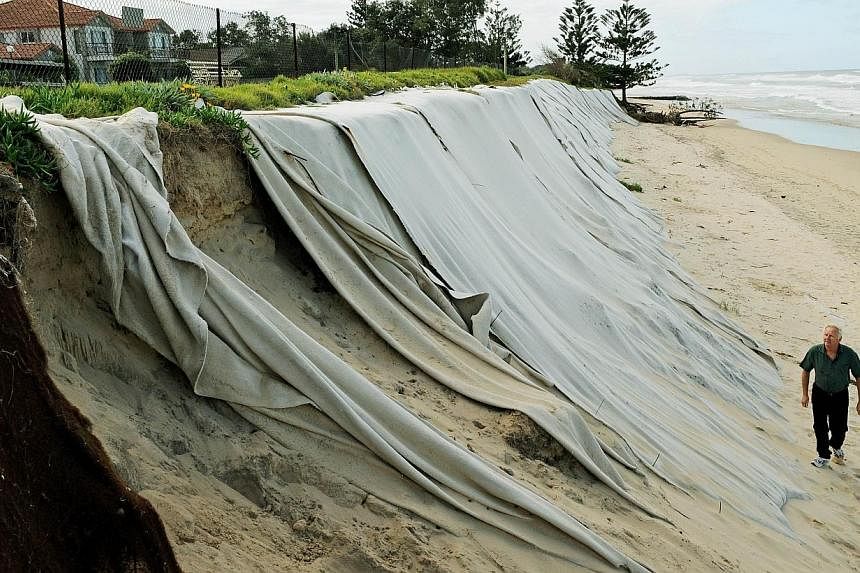SYDNEY (AFP) - Rising sea levels could threaten infrastructure worth more than A$226 billion (S$258 billion) in Australia if climate change is left unchecked, a study warned on Wednesday.
The Climate Council report said the most serious consequences of rising seas would be an increase in the frequency of coastal flooding and the retreat of shorelines. Both these threats could cause massive damage in Australia, where the majority of the population live on the coast and where cities, towns and infrastructure are concentrated, it said.
"Coastal flooding is a sleeping giant," the report said, adding that the potential for economic damage was huge. "More than A$226 billion in commercial, industrial, road and rail, and residential assets around Australian coasts are potentially exposed to flooding and erosion hazards at a sea level rise of 1.1 metres, a high end, but quite plausible, scenario for 2100."
When he came to power a year ago, Prime Minister Tony Abbott, who once said climate change science was "absolute crap", axed the government-funded Climate Commission in a bid to find savings. It was soon relaunched as the Climate Council - an independent watchdog operating as a non-profit body funded by public donations.
Its report said the sea level had already risen and was still rising as a result of climate change, and was likely to climb 0.4 to 1.0 metre through this century. But even a 0.1 metre rise in sea level increased the risk of coastal flooding, a potential problem in Australia where more than half the coastline is vulnerable to recession, it said. A sea level rise of 0.5 metre could involve a potential retreat of sandy shorelines by 25 to 50 metres, it added.
The report said the combined impact of inundation and shoreline recession put thousands of homes and businesses and 27,000 to 35,000 kilometres of roads and rail at risk. In addition, rising sea levels also posed dangers for many of Australia's species and natural attractions, including the Great Barrier Reef, due to the "drowning" of reefs, salt water intrusion destroying freshwater habitats and sandy beach erosion.
At particular risk of the rising sea levels were the coastal communities living on the Torres Strait islands in northern Australia, the report said.
The Climate Council said Australia's infrastructure had been built for the climate of the 20th century and was unprepared for the problems associated with unchecked climate change. "We need deep and urgent cuts in greenhouse gas emission this decade and beyond if we are to avoid the most serious risk from rising sea levels and coastal flooding," it said.
Australia's conservative government recently scrapped a carbon tax designed to combat climate change but has said it is committed to reducing greenhouse gas emissions to 5.0 percent below 2000 levels by 2020.
On Tuesday, Abbott announced he would skip a United Nations climate change summit this month attended by 125 other world leaders.

